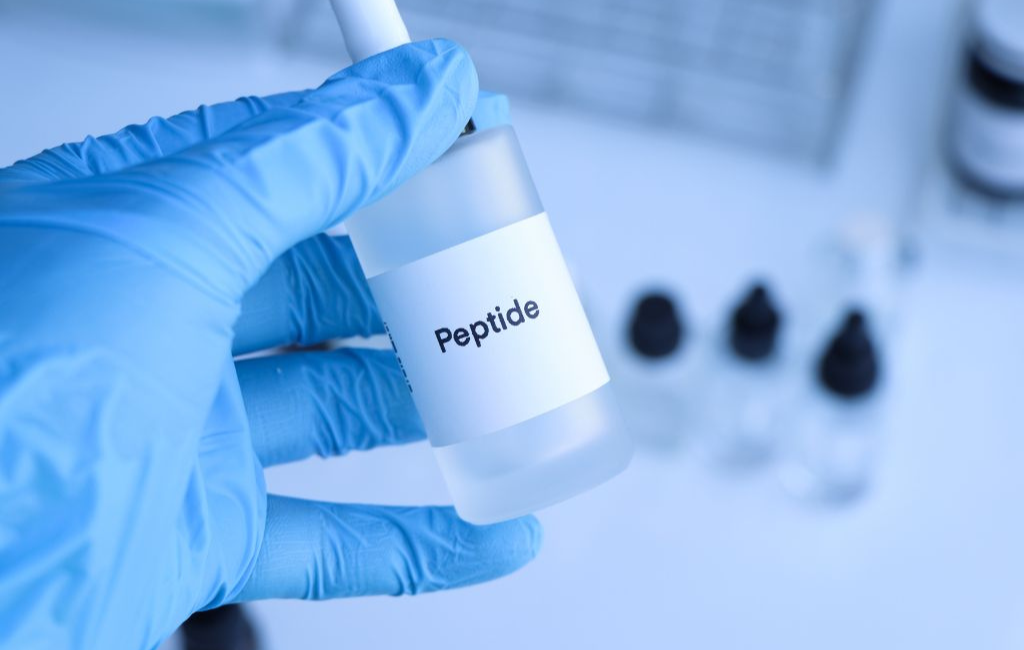Peptides Boost Muscle Growth

-
Table of Contents
Peptides Boost Muscle Growth
Peptides have gained significant attention in the fitness and bodybuilding communities for their potential to enhance muscle growth. These short chains of amino acids play a pivotal role in various biological processes, including muscle repair and growth. This article explores how peptides can boost muscle growth, supported by scientific research, examples, and case studies.
Understanding Peptides
Peptides are molecules composed of two or more amino acids linked by peptide bonds. They are smaller than proteins and can be classified into oligopeptides (2-20 amino acids) and polypeptides (more than 20 amino acids). Peptides function as signaling molecules in the body, influencing various physiological processes.
Types of Peptides
- Growth Hormone Releasing Peptides (GHRPs): These stimulate the release of growth hormone, which is crucial for muscle growth and repair.
- Insulin-like Growth Factor-1 (IGF-1): This peptide promotes muscle cell proliferation and differentiation.
- Follistatin: Known for its ability to inhibit myostatin, a protein that limits muscle growth.
Mechanisms of Muscle Growth
Muscle growth, or hypertrophy, occurs through two primary mechanisms: muscle fiber hypertrophy and muscle hyperplasia. Peptides can influence both mechanisms, leading to increased muscle mass and strength.
Muscle Fiber Hypertrophy
Muscle fiber hypertrophy involves the enlargement of existing muscle fibers. Peptides like IGF-1 and GHRPs stimulate protein synthesis and increase the size of muscle fibers. This process is essential for athletes and bodybuilders aiming to enhance their muscle mass.
Muscle Hyperplasia
Muscle hyperplasia refers to the formation of new muscle fibers. Follistatin, by inhibiting myostatin, can promote muscle hyperplasia. This results in a greater number of muscle fibers, contributing to overall muscle growth.
Scientific Evidence
Several studies have investigated the effects of peptides on muscle growth. A study published in the Journal of Clinical Endocrinology & Metabolism found that GHRPs significantly increased growth hormone levels, leading to enhanced muscle mass and strength in participants.
Another study in the Journal of Applied Physiology demonstrated that IGF-1 administration resulted in increased muscle protein synthesis and muscle fiber size in animal models. These findings suggest that peptides can effectively promote muscle growth through various mechanisms.
Case Studies
Real-world examples further illustrate the potential of peptides in boosting muscle growth. One notable case involves a professional bodybuilder who incorporated GHRPs and IGF-1 into his training regimen. Over a period of six months, he experienced a significant increase in muscle mass and strength, attributing his progress to the use of peptides.
Another case study involves a middle-aged individual recovering from a muscle injury. By using peptides like BPC-157, known for its healing properties, the individual reported faster recovery and improved muscle function. This highlights the therapeutic potential of peptides in muscle repair and growth.
Safety and Considerations
While peptides offer promising benefits for muscle growth, it is important to approach their use with caution. Consulting with a healthcare professional before starting any peptide regimen is advisable. Potential side effects, dosage, and individual health conditions should be carefully evaluated.
Potential Side Effects
- Injection site reactions
- Hormonal imbalances
- Allergic reactions
Conclusion
Peptides have emerged as a powerful tool for enhancing muscle growth through their ability to stimulate protein synthesis, promote muscle fiber hypertrophy, and facilitate muscle hyperplasia. Supported by scientific research and real-world examples, peptides like GHRPs, IGF-1, and Follistatin offer promising benefits for athletes, bodybuilders, and individuals seeking muscle repair and growth. While the potential of peptides is significant, it is important to approach their use responsibly and under professional guidance to maximize benefits and minimize risks.